Kai Ken Dog Breed Temperament Diet And Training
The name Kai Ken has a warrior-like ring to it. The Kai Ken, a rare Japanese dog, has the severe look of a prizefighter.
This fellow may look aggressive but is a joy to have around. We introduce it and share everything you need to know to look after it well.
What is the Kai Ken?
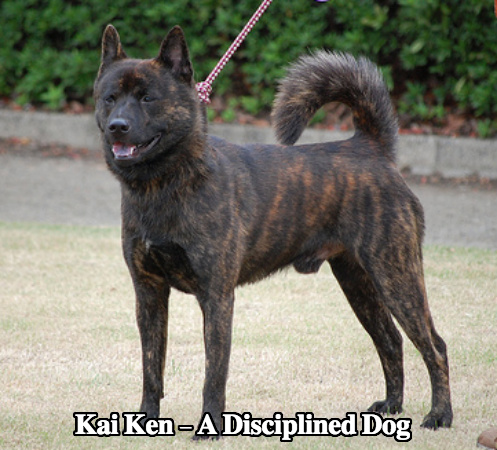
The Kai Ken, otherwise known as the Tora Inu or Tiger Dog, hails from Japan. Being rare, it enjoys the protection of the Nihon Ken Hozonkai or the Association For The Preservation of The Japanese Dog.
The Tora Inu is a rare breed, even in Japan. As such, the Nihon Ken Hozonkai has out in a monumental effort to preserve them. The Japanese Government has declared it a national monument, and it is one of the six rare dog breeds that it protects.
There are two kinds of Kai Ken. One is the Shishi-inu-gata, which is stocky, while the other, the Shika-inu-gata, is lanky and has a fox-like appearance.
History of the Kai Ken
The Kai comes from the Yamanashi Prefecture, an area of Japan that surrounded by mountains. Its rugged outlook made it the perfect dog for hunting. It’s known for climbing trees to get its prey. Hunters relied on it to trap wild boar, deer and on occasion, bear.
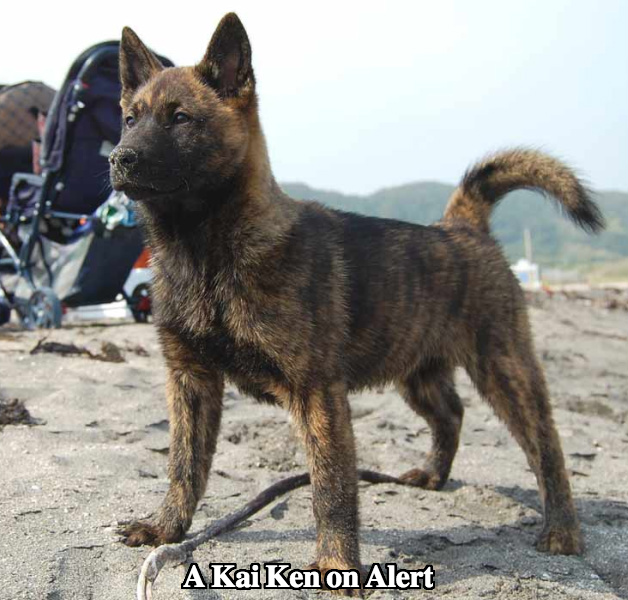
The original Kai descends from the hunting dogs of the island of Honshu. It’s an isolated breed because mountains surround the island. Hence, not many people knew of its origins.
The first Japanese dogs arrived with the Jomon and Yayoi people. These dogs didn’t vary in appearance because of Japan’s mountainous terrain and isolationist policies. But the Japanese aristocracy put in the effort to preserve Nihon Ken or Japanese dog breeds.
Research teams travelled the country, primarily to catalogue these dogs. There were many specimens to be found because of Japan’s mountainous areas.
Daisuke Adachi, a lawyer who lived in Kofu city, saw one of these tiger-striped dogs. They stuck in his mind, and he decided to look for them. He managed to find some of them in Ashiyasu Village. He stepped up efforts to preserve them.
He returned to Kofu City with two of them and began to preserve them as a breed. The Kai Ken Hozonkai (The Japanese Dog Preservation Society), helped its classification as a National Monument in 1933.
The dog’s numbers increased under the protection. People received rewards for owning them. The Kai’s numbers remained steady. Half the number of dogs that stayed in Japan were Kais.
It only arrived in the United States in the 1950s and gained recognition in the 1990s. This dog is now a beloved family pet. Japan made it a National Monument in 1934.
Characteristics of a Kai Ken
The Kai Ken isn’t the most attractive dog, but it’s extremely habit forming. Once you’ve had one, you’ll probably want another.
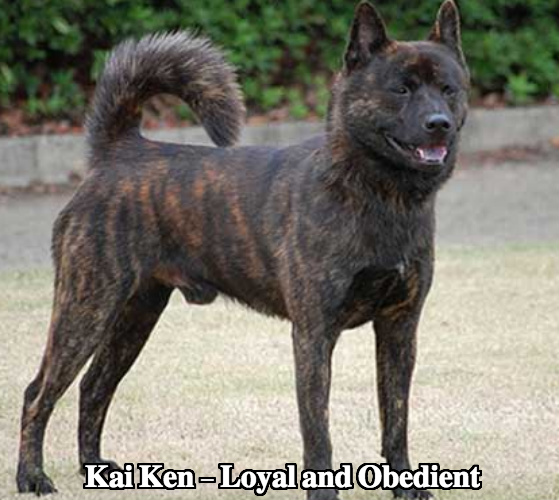
Remember that the Kai is a primitive dog. Hence, it has slightly stubborn, survivalist instincts. Remember that it’s quite wild. It’s important to socialise it well. Expose it to people and other dogs.
It’s essential that you do so as soon as you bring your puppy into your home. Take it to training classes and expose it to as many different, pleasant situations as you can. You will get a happy, well-adjusted pet.
People first bred the Kai for hunting. Consequently, it has natural hunting instincts. It’s always in search of prey. Keep it in a fenced area so that it doesn’t wander off searching for game.
Kais are bright, strong-willed dogs. Train yours with a firm, loving hand. It can live happily in the home. It’s an amiable, companion dog that’s extremely devoted to its family. This pack oriented creature will want to spend as much time with you as possible.
The Kai Ken can be extremely territorial. It’s also protective of its family members. It will be ready to defend you every step of the way is anything should threaten you. Do take precautions z(e.g.using a leash) when allowing it to meet strangers.
This dog is athletic and resilient. It does fancy acrobatics that will make you gape in awe. It can swim across rivers and jump over fences in a single bound. Its rugged outlook has much to do with its natural environment. Coming from the hilly Yamanashi Prefecture, it climbs mountains without difficulty. It makes an excellent trekking buddy.
As such, the Kai seldom suffers from health issues. It’s not usually susceptible to hereditary health conditions because of its muscular physique.
The Kai is a curious dog and has the propensity for getting into trouble. It’s ever ready to check out the neighbourhood; the so do remember to keep it confined.
Being intelligent, the Kai Ken is easy to house train. It will adapt to life in an apartment quickly. That said, it’s restless and needs to exercise. It needs plenty of mental stimulation as well. Make sure that you spend time playing with it and taking it out on walks.
In all, this dog is suitable for you if you want a pet that you can take outdoors. Use positive reinforcement to keep it in line.
Kai Ken Appearance
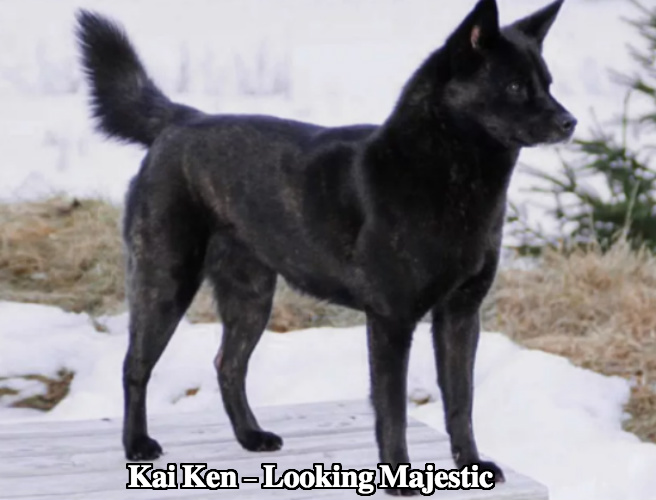
You must be curious about how this rare dog looks. We give you a breakdown of its appearance.
1. Size
At between 18 and 22 in, the Kai Ken is medium-sized. It does best in a fenced yard but can live in an apartment because its relatively small. Female Kais are slightly smaller between 17 to 20 inches.
2. Stance
The Kai Ken is a relatively sturdy dog because it spent time in the early years of its development climbing up mountains. Consequently, it has muscular legs and thighs. It should have well-developed limbs that reflect its mountain life.
3. Head
The Kai Ken has a wedge-shaped head and a Spitz-like appearance.
4. Nose and Eyes
Its pointed nose is either brown or black. Its eyes have the same colours.
5. Coat
The Kai has a harsh coat, a reflection of its resilience. It has medium-length hairs and seldom sheds.
The Kai’s most outstanding feature is its brindle stripes. Kai Kens have lines in various shades of brindle, earning it the name “Tiger Dog’ or “Tora Inu”.
Choosing A Kai Ken Puppy
The Kai Ken is a rare, somewhat expensive dog breed. Hence, you want to make sure that you pick the best puppy from the litter. If you want a puppy that you can enter in dog shows, you’ll have to make your choice even more carefully. We offer a few valuable tips on how to pick the right puppy for you.
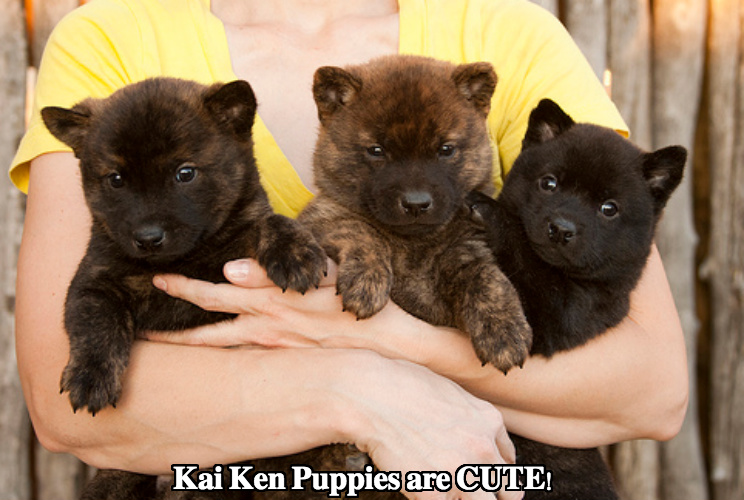
1. Buy the puppy from a responsible breeder
First of all, try not to buy your Kai Ken from a pet store. Many of them purchase their puppies at low prices from puppy mills so that they can make profits. Furthermore, these shops keep the puppies in cramped conditions.
You’ll want to see how the puppy interacts with its littermates. Without the guidance of its mother and siblings, it’s quite likely to become aggressive.
2. Put yourself at the head of the visiting list
Try not to buy a puppy if other owners have already bought most of its littermates. You’re not likely to get the best one. Get someone to evaluate the puppies with you, and arrange to visit the breeder right after their birth.
3. Don’t buy puppies if they are from the first litter
The reason you shouldn’t do this is that it’s hard to know if the puppies have inherited genetic conditions. Buy puppies from the mother’s second or third litter to be sure that they have no inherent health problems.
4. Spend time with the parents
Spend time with the puppies’ mother and father. Observe how they behave around you. Their puppies are likely to have some of their traits.
5. Ask about the puppies’ health and demeanour
A reliable breeder will be able to tell you about the potential health problems of his puppies. He’ll also be able to tell you which are dominant or submissive.
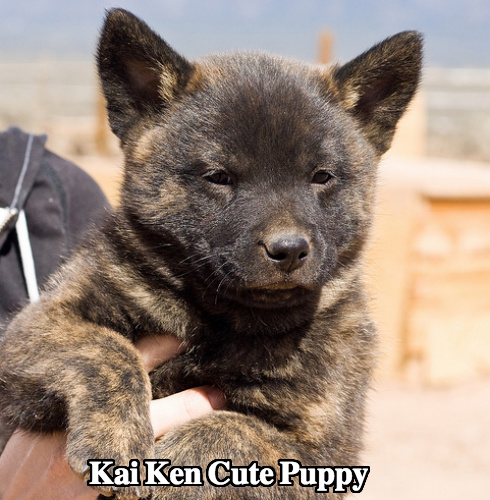
6. Observe the puppies yourself
Watch the puppies and see how they behave towards each other. A tip is to do so when they are about to feed. Dominant puppies will usually get to feed first, while the submissive ones get pushed away from their mother’s nipples.
7. Evaluate the puppy you’re interested in buying
Then, observe how the puppy behaves towards you. Cradle and lift it gently. The more patient it is being handled, the better.
8. Think about the puppy’s personality
Remember that Kais are strong-willed. You must value a dog that has a mind of its own. Many are likely to be dominant, so prepare yourself for a challenging, yet rewarding ownership experience.
Test the puppy’s jaw control. Put your finger in its mouth. If it nips you a little forcefully, say “ouch’. If it reacts with concern, it will probably become a caring, sensitive pet.
Of course, each puppy has a unique character. Not all Kai Kens are stubborn. Some are eager to please, while others seem relaxed and a little indifferent. Others may be a bit timid. Choose one that gels with your personality.
9. Examine the puppy thoroughly
Check the puppy’s ears, eyes, teeth, gums, and rear. The pup is healthy if it has a shiny coat. There should be no discharge from the eyes, ears, or genitals. Also, it’s healthy if it walks well and breathes regularly.
Clap your hands to make sure that the puppy can hear you. To conduct a vision test, roll a ball in front of it and see how it reacts.
House training a Kai Ken
The Kai is an intelligent dog and isn’t difficult to house train. That said, you should familiarise yourself with the potty training process.
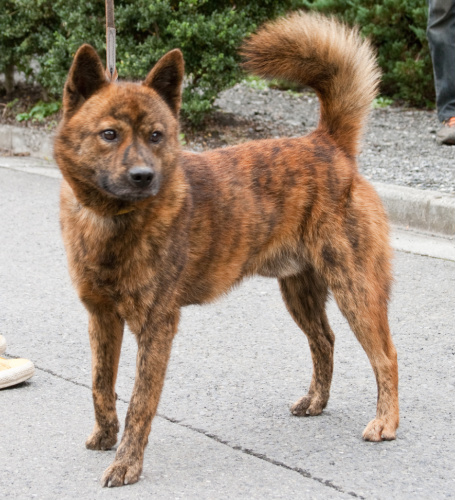
1. Routinising
First of all, it’s essential to get yourself and your little Kai routinised. Routines help your dog get used to easing itself at the right times.
Puppies typically do so after they get up, before their meals, and before they go to bed. It’s wise to take your puppy outside or to put it in its ” toilet” at these times. To prevent coprophagia (poop eating), make sure that you clean up after it straight away.
2. Crate training
It may seem harsh to put your dog in a crate, but it has benefits.
A crate gives you a puppy a space of its own. It becomes a retreat for a dog when everything seems overwhelming. Through crate training, your dog will understand that it isn’t supposed to relieve itself in its home.
The key lies using it appropriately. Leave the door open when training your dog to use it. Put a treat in it. Your dog will make positive associations with it, and go inside of its own accord.
3. Paper training
You’ll find it necessary to teach your Kai to go in a specific area indoors if you live in an apartment. To do this, lay the area where you expect the dog to ease itself with newspaper. Put your puppy there at the appropriate times, as discussed in point 1.
Your dog will relieve itself in this area. Remove some of the paper after some time. Your dog will come to understand that the narrowed- down area is its toilet.
4. Outdoor training
Always take your puppy to the spot where it usually eases itself. Kais tend to wander off, so make sure that yours is on a leash. Remember to clean up after it with either newspaper or a poop scoop – even pet owners dislike stepping on dog poo.
5. Using a bell
A bell helps your Kai to make associations with potty time. Hang one above your dog door, or just ring it when its time for it to relieve itself. Get your puppy to give it a bump with its nose. It will know that its time to go.
Grooming a Kai Ken
Grooming a Kai is straightforward because it’s a short-haired dog, but remember that it’s prone to shedding. Follow these simple tips to keep it clean and looking its best.
Before you groom your dog, put yourself in an excited mood. Your wilful Kai will look forward to the process.
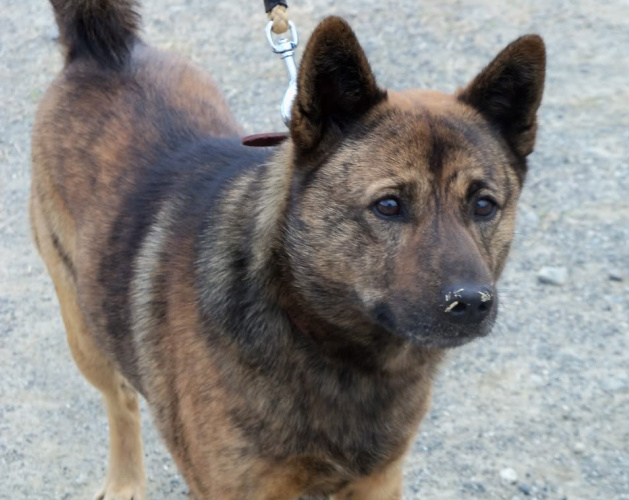
1. Remove Mats and Tangles
The Kai Ken is short-haired, but its hair may become tangled occasionally. Remove its tangles with a matting rake. Spray a dematting solution on them if they’re stubborn.
2. Hair Clipping
It’s time to clip your dog’s hair after removing all the mats. The Kai Ken does not need too much clipping. Do be careful when using a sharp blade around its skin.
3. Brushing
Kais need regular brushing to keep them clean and prevent shedding. You can stop its hair from falling off if you bear these tips in mind.
First of all, know what makes your pet shed. Shedding could indicate the presence of parasites or bacteria. It may have food allergies as well. If your dog has a kidney, liver, thyroid, adrenal disease or cancer, it may lose hair. Hair loss is also a sign of liver dysfunction. Also, dogs may shed if they lick themselves all the time. Pregnancy or medication may cause them to lose her too.
A soft bristle brush is suitable for a short haired dog like the Kai Ken. A rubber brush is best if it has sensitive skin.
4. Bathing
Dogs can be fickle about bathing. Your Kai may like water or avoid it like the plague.
Give it a positive bath experience from the start. Offer friendly rubs and words of encouragement. Ensure that the water’s not too cold or hot.
Put cotton balls in its ears so that they won’t absorb water. Remember not to use human shampoo on your dog as it may have a pH level that’s too high. Work from head to tail, then underneath its body.
5. Drying
If you use a dryer, make sure that it’s on a low heat setting.
6. Ear Cleaning
A dog’s ear has a different structure from a human’s. Don’t clean too deeply as you may damage its eardrums. Massage the base of the ear to loosen the debris and wax.
7. Nail trimming
Nail trimming is a part of the grooming process that some dogs hate. Rub your Kai Ken’s paws gently. Clippers can be somewhat off-putting, so get someone hold the door as you use them.
Cut at a small angle and take small snips. Don’t cut into the pink area known as the quick, or you’ll cause a lot of discomfort for your dog. If you do, use styptic powder to stop the bleeding.
8. Brushing teeth
You must keep your dog’s teeth healthy, just as you would yours. Dogs are prone to ingesting unwanted material from the ground, so it’s crucial that you get rid of it.
Never use human toothpadogs are allergic to fluoride. You can use an old toothbrush that you no longer want.
Questions to ask a Kai Ken breeder
Dog breeders come in different varieties. There are those who are entirely committed to breeding dogs that conform to breed standards, and there are others who want to make a fast buck.
Asking these questions will help you spot the responsible ones.
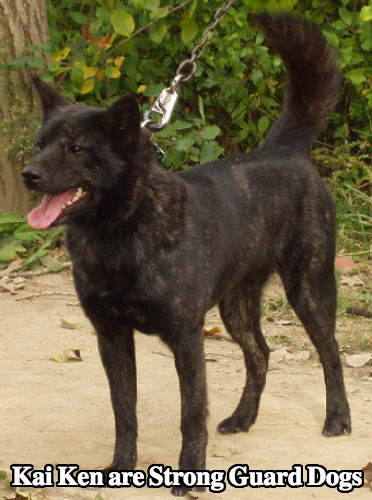
1. Do you have space to breed Kai Kens?
A reliable breeder we’ll take care of a mother and her litter of puppies in spacious conditions. There should be room enough for all the dogs to move freely.
2. Can I meet the puppies?
A qualified breeder will allow you to meet a puppy and all its litter mates. He’ll let you see all the puppies and evaluate their personalities. You’ll know which are dominant or submissive observing them. He’ll also allow you to meet individual puppies to determine their responsiveness to handling.
3. Can I meet the puppies parents?
A breeder who understands his trade will let you meet his puppies parents. Doing so assures you that the puppies have not inherited genetic conditions.
4. Do you belong to a breed club?
A Kai Ken breeder will belong to the Nihon Ken Hozonkai and understand what it takes to raise this dog.
5. Do you breed any other dogs?
Choose a breeder who breeds only Kai Kens. He would produce the dogs just after they’re about a year old. Ask how many litters he breeds a year as well,
6. Do the dog have health problems?
A responsible breeder will be honest about the health problems his puppies may have. Don’t forget to find out if the parents do as well. You’ll want to be sure that your Kai Ken puppy has no hereditary diseases.
7. Does your breeding stock meet the criteria Kai Kens?
The breeder should have mated dogs that fulfil breed standards. They should be at least 18 inches long, have sturdy limbs and a curled tail.
8. What criteria must I do feel to buy one of your puppies?
A breeder who cares for his dogs’ welfare won’t just let you take a puppy home. He’ll make sure that you’re ready to own a dog. He should stipulate that you must return the dog to him should you not be able to take care of it for any reason.
9. At what age do you sell the puppies?
A knowledgeable breeder wouldn’t sell his puppies too young. They must be with him for at least two months before he can sell them. He should also have vaccinated them.
10. Is there a contract?
He should state any information about his puppies, as well as his requirements for selling them in a contract.
Kai Ken Nutrition
Consider your Kai Ken’s digestive needs when feeding it. The Kai is a medium-sized dog, Choose a dog food for medium breeds.
Dog food is costly, so you may want to feed your pet food for humans. You can do this if you know which ones it can eat.
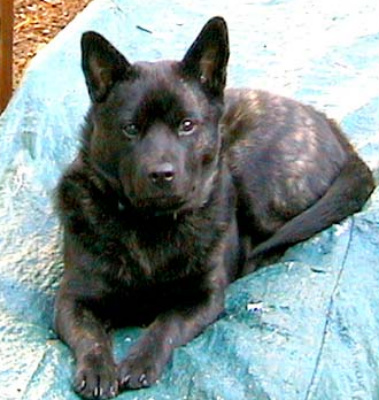
1. Peanut butter
You wouldn’t usually consider feeding your dog peanut butter because it has lots of salt. The unsalted option, however, is safe for your pet. Peanut butter is an excellent treat for dogs because it lasts a long time. It also contains protein and Vitamin E.
2. Chicken
Chicken is a versatile food. Feed it as a snack or an addition to a meal. Remember not to give the bones to your pet because they can splinter and are dangerous.
3. Carrots
Carrots are nutritious for humans and dogs. These root vegetables are full of fibre and Vitamin A. TubbThey strengthen your pet’s teeth and are low in calories.
4. Yoghurt
Yoghurt has plenty of protein and calcium. Because it has digestive enzymes, it’s ideal for your pet’s digestive health. Ensure that the yoghurt you choose has no artificial sweeteners and is non-fat.
5. Pumpkin
Pumpkin is beneficial for your Kai Ken’s digestive health as well.
Feed it to your pet if it has a sensitive stomach. It also contributes to your pet’s vitamin and fibre intake.
6. Eggs
Your pet will enjoy raw or cooked eggs. They contain protein, riboflavin, and selenium. Remember not to add seasoning.
7. Green beans
Is your dog a little pudgy? Feed it green beans. Many pet owners use them as a weight loss tool. They make a healthy treat because they are low in calories.
8. Salmon
Salmon is a prized food because it is high in omega-3 fatty acids. It’s the fish that contributes to the fish oils you give to your pet and is a source of B vitamins.
9. Sweet potatoes
Sweet potatoes are a superfood that’s high in fibre and vitamin A. They provide lots of energy as well.
10. Apples
Apples make the perfect treat for dogs because they have plenty of phytonutrients. They are also a source of A and C vitamins. Don’t feed your pet the seeds or core because they contain cyanide.
11. Oatmeal
Oatmeal is excellent for your pet if it isn’t sensitive to grains. It’s also a top source of dietary fibre.
Training your Kai Ken
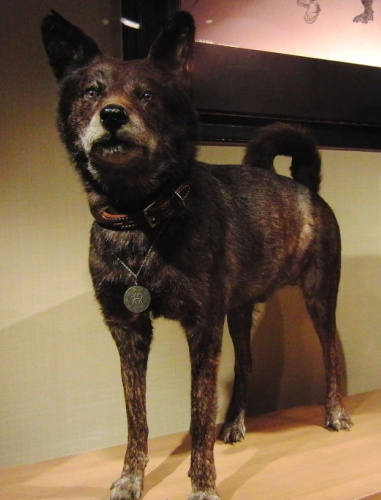
Your Kai is an independent fellow with a mind of its own. A few commands will help to keep it in check.
1. Sit
The ‘Sit” command is the first one that all dogs need to know. It’s useful for preventing your restless Kai from wandering.
To teach it, hold a treat above its nose. Move your hand up and over its head. This motion will cause it to lower its behind. When your dog is in this position, say “sit” and give it a treat.
You’ll have to reinforce this command until your dog has mastered it.
2. Come
You’ll need this command to bring your Kai back to you if he decides to run off onto the street.
Put him on a leash. Bend down to his level and use the word ‘Come”. Pull him to you gently. Give him a treat when he arrives.
3. Down
This command isn’t easy to teach because it involves submission. Though it isn’t one that your Kai will particularly like, it will keep him grounded.
Find a treat that smells good. Hold it in your fist. Move your hand up to your dog’s nose.
Your dog will sniff the treat, and as it does, move your hand to the ground. Prompt it to follow you. As it does, say ‘down ‘ and offer the treat.
4. Stay
This command is another difficult one for dogs to learn because their natural instinct is to follow their owners. It must understand the ‘Sit” command first.
Get your dog to sit. Then, stretch out your palm and say ‘stay’. Move backwards. Give your dog the treat if it stays.
Games To Play With Your Kai Ken
The Kai is an energetic, playful dog. It needs mental and physical stimulation, so it’s never wise to leave it alone with nothing to do. Here are a few games you can play with it.
1. Round Robin Recall
This beauty of Round Robin Recall is that it’s a multiplayer game. Get your family members or friends to join you.
Fill their hands with snacks and get your dog to sit in the middle. The objective of the game is to get it to go to everyone. Your dog should go to each person as he calls. The person should reward it with a treat when it does.
2. Find
This game is one of the easiest to teach and is perfect for a rainy day.
Put your dog in another room and hide treats anywhere. You can do this behind chair legs, closets, or pillows.
After hiding them, call your pet. You’ll have to give it a few hints at first, but it’ll soon enjoy the challenge of looking for the items.
3. Hide and Seek
This game is an excellent one to train your Kai’s recall. Have a family member hold it in another room and hide elsewhere. Then, get the person to release the dog. Be impressed by how quickly it finds you.
4. Obstacles
You can create a makeshift obstacle course in your living room. Use chairs or boxes for your pet to stand on, hula hoops for it to jump through, or milk cartons to block its way. It will get your pet to work its mind.
5. Clean up
Teach your pet the “Clean Up” command. This game not only gets your home tidy but gives your pet hours of fun as well. You may even teach your pet the names of individual items with a bit of reinforcement.
In conclusion, proper house training, nutrition, grooming, and obedience lessons will lead to a well-adjusted Kai. Of course, it will help to choose the right puppy from a responsible breeder as well.
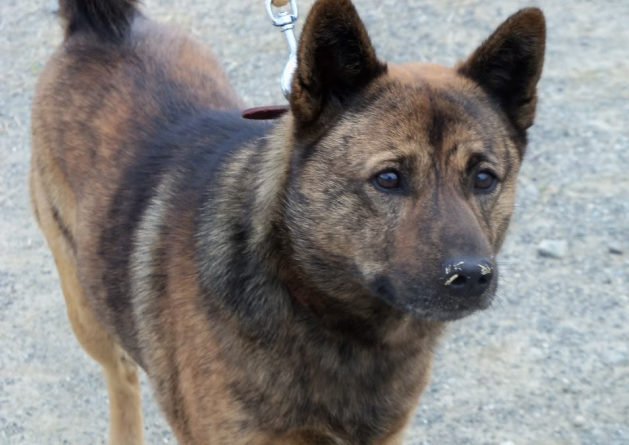
Thanks so much for sharing!
thanks min buat update nya